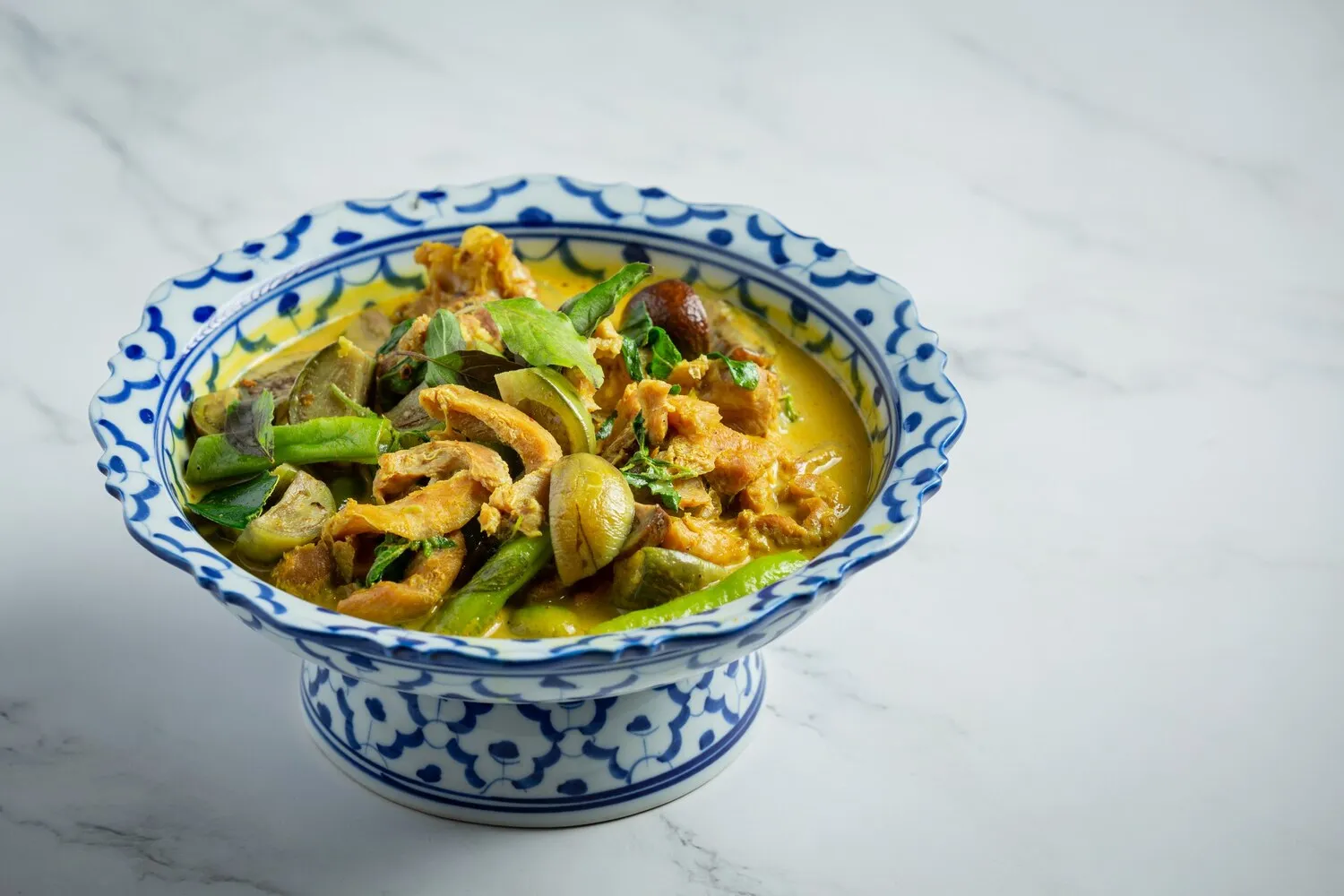
Red Curry
Thai red curry with coconut milk, bamboo shoots, bell peppers, eggplant, and your choice of protein (chicken, beef, tofu, or shrimp).
Nutrition Facts
* The % Daily Value (DV) tells you how much a nutrient in a serving of food contributes to a daily diet. 2,000 calories a day is used for general nutrition advice.
Thai curries have evolved over centuries, influenced by neighboring cuisines like Indian and Malay. The introduction of chili peppers by Portuguese traders in the 16th century significantly shaped the development of distinctly Thai curries, leading to the creation of dishes like red curry.
Red curry holds a significant place in Thai cuisine and culture, often served during family meals, celebrations, and offered as a common choice in restaurants. It represents the balance of flavors and textures that are central to Thai culinary philosophy.
Family Style Dining
Thai meals are typically eaten family-style, with multiple dishes shared among everyone at the table. Red curry is a frequent component of these shared meals.
Religious Offerings
Certain Thai dishes, including curries, can be offered as food for monks or at temples as part of religious ceremonies and traditions.
Regional Variations
While the fundamental flavors of red curry remain consistent, regional variations exist across Thailand, with adjustments made to the level of spiciness, sweetness, and the specific vegetables used.
Red curry is characterized by its rich, spicy, and slightly sweet flavor profile, balanced by the creamy texture of coconut milk.
The flavor base is built upon a red curry paste made from dried red chilies (which provide the color and heat), galangal, lemongrass, kaffir lime leaves, coriander root, cumin, garlic, shallots, and shrimp paste. Coconut milk adds richness and sweetness, while fish sauce contributes umami. Bamboo shoots offer a slightly bitter and crunchy element, bell peppers provide sweetness and color, and eggplant adds a unique texture and mild flavor. The chosen protein (chicken, beef, tofu, or shrimp) absorbs the complex flavors of the curry.
Making Your Own Curry Paste
While store-bought curry paste is convenient, making your own allows for greater control over the flavor profile and spiciness. Using fresh, high-quality ingredients will yield the best results.
Tempering the Curry Paste
Sautéing the curry paste in coconut milk until fragrant before adding other ingredients is crucial. This process releases the flavors and aromas of the spices, resulting in a richer and more complex curry.
Adjusting the Consistency
The consistency of red curry can be adjusted by adding more or less coconut milk. For a thicker curry, simmer it for longer to allow the sauce to reduce.
Choosing the Right Eggplant
Thai eggplant (smaller, round eggplants) are traditionally used, but other types like Japanese eggplant can also be used. Ensure the eggplant is cooked until tender but not mushy.
Explore additional Curry dishes and restaurants
Explore CurryDiscover top dining spots and culinary experiences in Bregenz.
Explore BregenzLearn more about the food culture, restaurant scene, and culinary heritage of Austria.
Explore Austria